EXAM PATTERN AND SYLLABUS FOR RECRUITMENT TO THE POSTS OF ASSISTANT EXECUTIVE ENGINEERS
SCHEME OF EXAMINATION
| No.of Questions | Duration (Minutes) | Maximum Marks | |
| Part: A: WRITTEN EXAMINATION (Objective Type) Paper-I: General Studies and General Abilities | 150 | 150 | 150 |
| Paper-II: Civil Engineering (Degree Level) | 150 | 150 | 300 |
| Part: B: Interview | 50 | ||
| Total | 500 |
SYLLABUS
Paper-I: GENERAL STUDIES AND GENERAL ABILITIES
- Current affairs – Regional, National and International.
- International Affairs.
- General Science; India’s Achievements in Science and Technology.
- Environmental issues; Disaster Management- Prevention and Mitigation Strategies.
- Economic and Social Development of India and Telangana.
- Physical, Social and Economic Geography of India.
- Physical, Social and Economic Geography and Demography of Telangana.
- Socio-economic, Political and Cultural History of Modern India with special emphasis on Indian National Movement.
- Socio-economic, Political and Cultural History of Telangana with special emphasis on Telangana Statehood Movement and formation of Telangana state.
- Indian Constitution; Indian Political System; Governance and Public Policy.
- Social Exclusion; Rights issues such as Gender, Caste, Tribe, Disability etc. and inclusive policies.
- Society, Culture, Heritage, Literature of Telangana.
- Policies of Telangana State.
- Logical Reasoning; Analytical Ability and Data Interpretation.
- Basic English. (10th class Standard)
PAPER-II: CIVIL ENGINEERING (DEGREE LEVEL)
- Building Materials And Construction:
Bricks– Types of Bricks, Indian standard classification, properties; Stones – Types of stones, classification, properties, dressing and polishing of stones; Methods of Quarrying; Cement – Different grades and types of cement, properties and IS specifications; Aggregates – coarse and fine aggregate, properties and IS specifications; Cement Mortar – Proportions of cement mortar for various applications; Concrete – Constituents of Concrete, Different grades of Concrete, mix proportioning using IS Code, Properties of fresh and hardened Concrete; Admixtures – Types of Admixtures
2. Strength of Materials And Theory of Structures:
Strength of Materials: Simple stresses and strains, elastic constants and relationship between them; Compound bars; Temperature stresses; Shear forces and bending moment diagrams for beams; Principal stresses and Mohr’s circle of stress, Theory of bending and bending stresses ; Shear stress distribution; Theory of torsion; Springs; Deflections of beams; Thin and thick cylinders;; Analysis of trusses, Betti-Maxwell theorem; Shear centre and unsymmetrical bending.
Theory of Structures: Direct and bending stresses; Columns and struts; Strain energy method; Moving loads and influence lines; Arches and suspension bridges; Static and kinematic indeterminacy; Moment distribution, Slope deflection, and Kani’s methods applied to continuous beams and portal frames; Column analogy and matrix methods of analysis.
3. RCC and Steel Structures:
Concrete Structures: Materials, permissible stresses and IS Specifications; Working stress methods; Limit State Method – Stress Blocks parameters, design of Beams, Slabs, Columns and Footing; Design for Shear and Torsion; Design of Retaining Walls, Water tanks, and T-Beam Slab bridges; Yield line theory.
Steel Structures: Properties of steel sections, permissible stresses, IS Specifications; Riveted and welded joints and connections; Design of simple and compound Beams and Columns, Column bases, Roof trusses, Plate and Gantry Girders; Plate Girder Lattice Girder Railway bridges, and Bearings. Plastic analysis.
Pre-Stressed Concrete: Basic concepts, material for pre-stressing, losses in Pre-stress, classification of pre-stressing system; Analysis of PSC Sections.
4. Fluid Mechanics and Hydraulics:
Fluid Properties; Measurement of Pressure – Manometers; Fluid Kinematics – Classification of Fluids, Stream function and Velocity potential, significance and use of Flownets, Fluid dynamics – Continuity equation, Bernoulli’s equations and Impulse momentum equation; Laminar and Turbulent flow through pipes – significance of Reynolds number, Hagen – Poiseuille’s equation, Darcy – Weisbach equation, Friction factor, Water hammer phenomenon; Compressible flow – Bernoulli’s equation for Isothermal and Adiabatic conditions, Mach Number, Mach cone, stagnation properties; Steady uniform flow through open channels; Gradually varied flows – significance of Froude number, classification and computation of Flow profiles, Hydraulic jump, Surges; Boundary layer – Laminar and Turbulent Boundary layer, Boundary layer thickness, rough and smooth Boundaries, Boundary layer separation; Dimensional analysis and similarity laws; Hydraulic Turbines – classification, Velocity triangles, principles and design of reaction and impulse turbines; Centrifugal pumps – specific speed, work done and efficiency, characteristic curves.
5. Hydrology and Water Resources Engineering:
Hydrological cycle; Rainfall – types and measurement, network design; Infiltration – Ф- index; Runoff – process, factors and determination of runoff, dependable yield; Floods – flood hydrograph, computation of flood peak using rational formula, unit hydrograph method and Gumbel’s extreme value methods; Groundwater – types of aquifer and properties, Darcy’s law, specific yield, steady radial flow to wells in confined and unconfined aquifers; Irrigation – types and advantages, soil water plant relationship, consumptive use, duty, delta, base period, crops and their water requirements; Single and multipurpose projects; Dams – classification, forces and design of Gravity dam and Earth dam; Spillways – types, energy dissipation, stilling basin, Appurtenances; Canals – alignment, Kennedy’s and Lacey’s theories, lining of Canals; Weirs – components, design of vertical drop and sloping glacis weir; Seepage forces – Bligh’s Theory, Khosla’s theory; Canal falls – types and design principles; Cross drainage works – classification and design principles of aqueducts; Hydropower – classification and principle components of Hydroelectric power plants.
6. Environmental Engineering:
Water supply – objectives, rate of demand, population forecasts; Analysis of water – classification, design of coagulation, sedimentation, filtration, disinfection and softening processes; Methods of layout of distribution pipes – Hardy cross method; Waste water engineering – systems of sewerage, hydraulic formulae and design of sewers, BOD, COD, self purification of natural streams, methods of sewage disposal; Treatment of sewage – principles and design of grit chamber, sedimentation tanks, trickling filters, activated sludge process, sludge digestion tanks, septic tanks; Municipal solid waste – characteristics, collection and transportation of solid wastes; Air Pollution – types and sources of pollutants, air quality standards; Noise pollution – Impacts and permissible limits, measurement and control of noise pollution.
7. Transportation Engineering:
Highway Classification as per IRC; Highway alignment; Engineering Surveys; Geometric Design; Cross sectional elements of road; Gradient; Grade compensation; Traffic Surveys – speed, Volumes, origin and destination; Highway capacity and level of service as per HCM 2000; Intersection – at grade and grade separated; Channelization; Rotary intersection; signal design – webstar method, traffic signs, pavement marking; Parking studies, accidental studies, pavement types, Factors considered for pavement design, flexible and rigid pavements design concepts.
Railway Engineering: Permanent way, rails, sleepers, ballast; Creep, coning of wheel, rail fixtures and fastenings, super elevation, cant deficiency, curves, turnout; Points and crossings.
Airport Engineering: Selection of site of Airport, runway orientation and design, wind rose diagram, basic run way length, correction to basic runway length.
8. Soil Mechanics and Foundation Engineering:
Soil Mechanics: Physical properties of soils, Classification and identification, Permeability, Capillarity, Seepage, Compaction, Consolidation, Shear Strength, Earth pressure, Slope stability;
Foundation Engineering: Site investigations, stress distribution in soils, Bearing capacity, Settlement analysis, Types of Foundation, Pile foundations, Foundations on expansive soils; swelling and its preventions; Coffer dams, Caissons, Dewatering, Bracing for excavations, Newmark charts, machine foundations.
Engineering Geology: Mineralogy, Structural Geology, Groundwater Exploration methods; Engineering Geology applications for Tunnels, Dams and Reservoirs; Geological hazards and preventive measures.
9. Estimation, Costing and Construction Management:
Abstract estimate: Detailed estimate – centerline, long & short wall method, various items of Civil Engineering works as per Indian Standard, General Specifications – Earth Work, Brick / Stone Masonry in Cement Mortar, RCC, Plastering in Cement Mortar, Floor finishes, white wash, colour wash; Standard schedule of rates, lead and lift, preparation of lead statement; Computation of earth work – Mid-ordinate, Mean Sectional area, Trepezoidal method, Prismoidal Rule; Approximate estimate – Plinth area and cubic rate estimate.
10. Surveying:
Principle and classification of surveying, chain surveying; Compass surveying; Levelling and contouring; Theodolite surveying; curves; Introduction and Fundamental concepts of electronic measuring instruments – EDM, Total station, GIS & GPS.
TSPSC: AEE POSTS SYLLABUS PDF (DOWNLOAD)
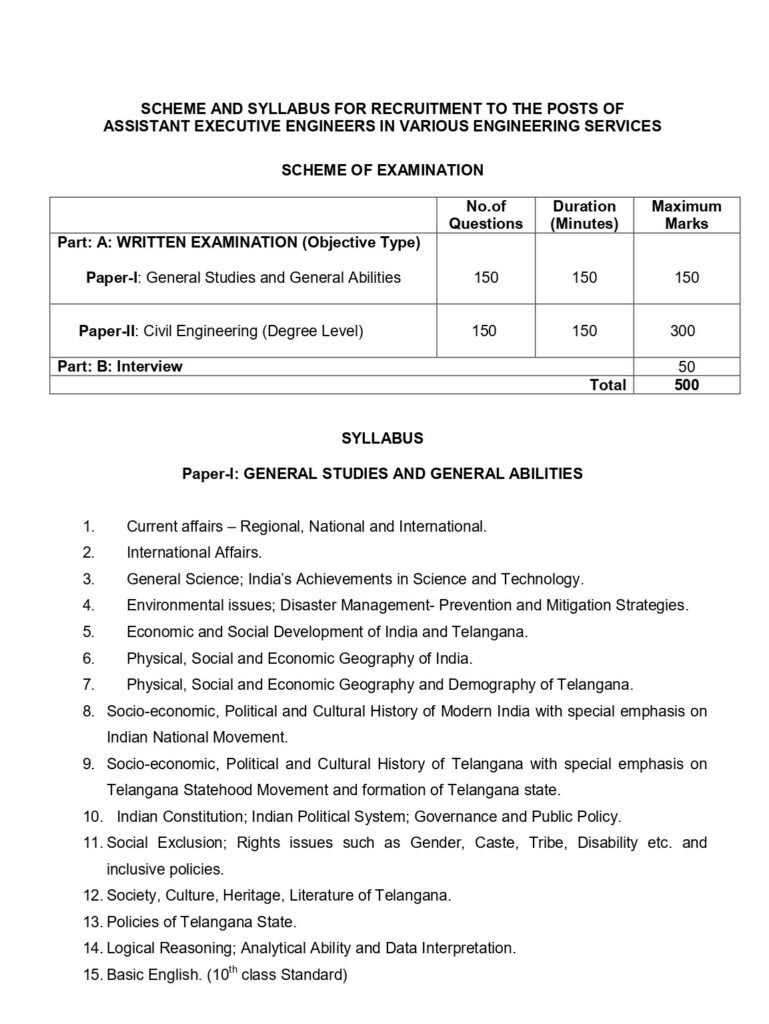
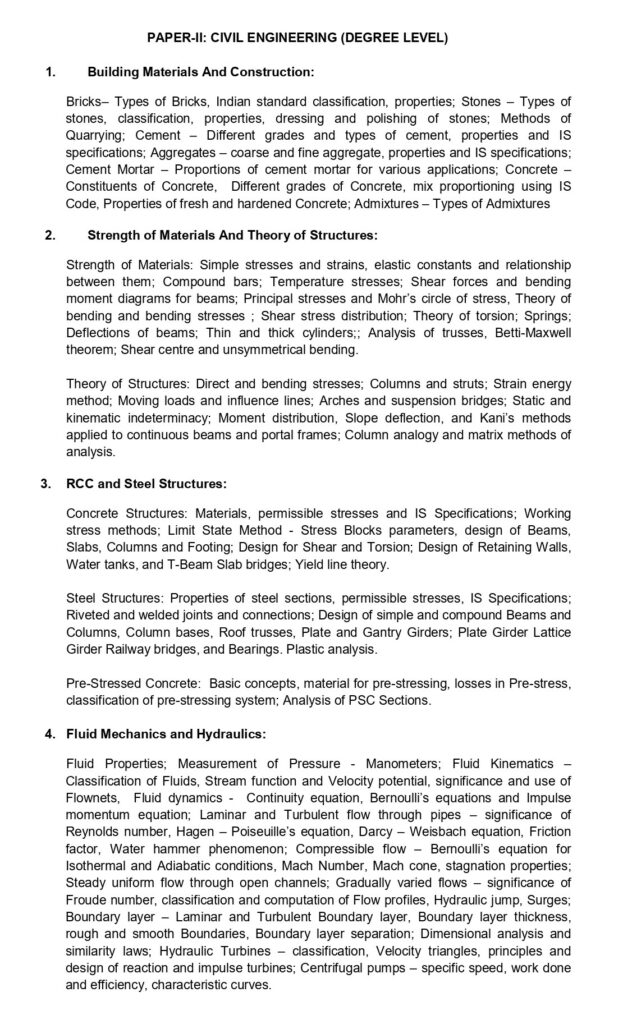
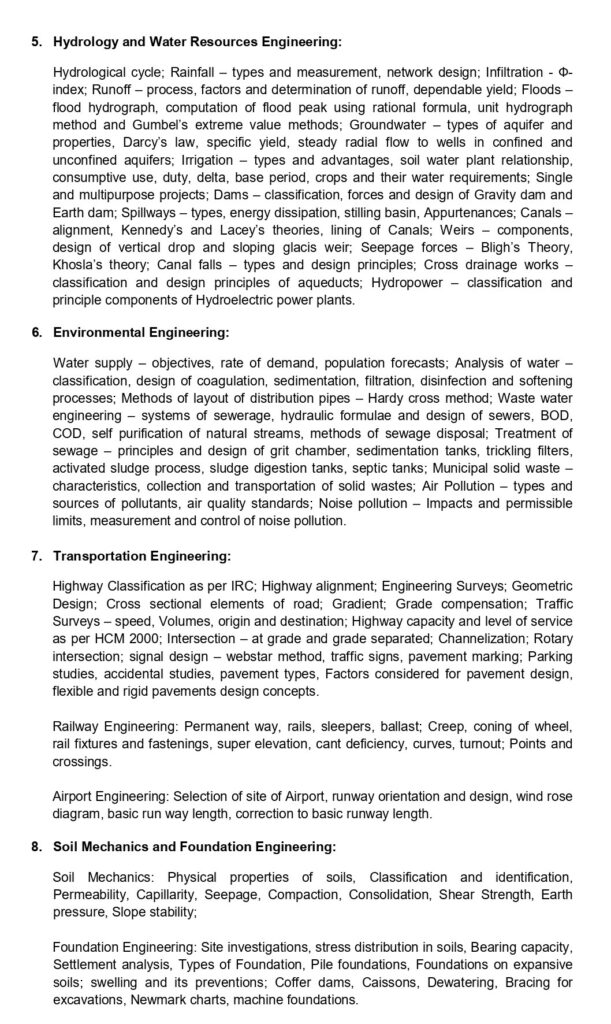
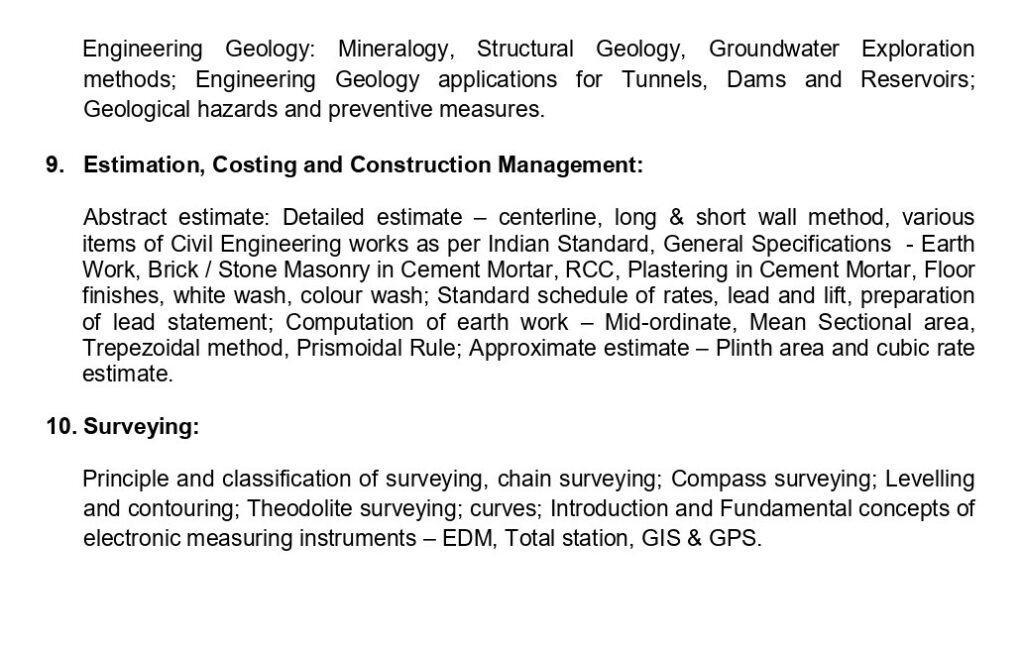
TSPSC: AEE POSTS SYLLABUS PDF (DOWNLOAD)
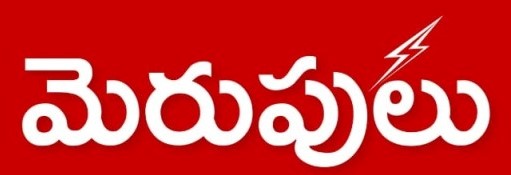


Police